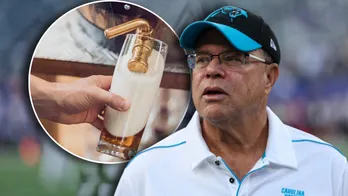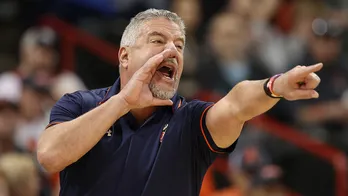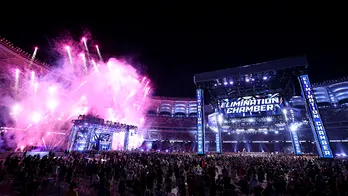Historic NCAA Settlement Approved By All Conferences With A Wrinkle; College Athletics Headed Into New Era
The SEC and Pac 12 conferences were the last ones to the party when it came to voting on the NCAA settlement that will change the landscape of collegiate athletics, but the agreement has now been approved by all parties. For the first time, colleges will now be allowed to pay athletes for their participation in sports.
On Thursday, the NCAA Board of Governors voted to enact the settlement that will see the organization put the House vs. NCAA case to bed, which will cost $2.77 billion in damages to be paid to plaintiffs. The money will be paid to athletes who were seeking retro-pay for lost income from NIL and television funds that weren't in place before the inception of NIL in 2021.
The amount will be paid back over a 10-year period, while the settlement will also introduce a new form of payment for student athletes.
In addition to the monetary settlement, the approval by all conferences and the board of governors will also pave the way for revenue sharing in collegiate athletics. The current model agreed upon would give schools the option to share upwards of $20 million with athletes at each institution. Now, it should be noted that schools do not have to participate, but some type of revenue sharing will most likely occur at each school across the country in some form.
According to multiple sources with knowledge of the situation, the plan is to have the new revenue sharing model in-place before the start of the 2025 season, in the Fall.
The monetary settlement agreed to by all the major conferences in college athletics, along with the NCAA, will help pay damages to plaintiffs who were involved in three different antitrust lawsuits against the NCAA.

NASHVILLE - SEC Commissioner Greg Sankey speaks during SEC Media Days at Grand Hyatt Nashville on July 17, 2023. (Photo by Johnnie Izquierdo/Getty Images)
The move has sent shockwaves through athletic departments across the country, with plans already being put into place on how to pay for the type of revenue sharing that will allow schools to compete with each other when it comes recruiting, along with paying the athletes. A debate over how this will play out when it comes to Title IX is still being heavily discussed right now.
But, with the approval by all necessary parties, we could see the revenue sharing being enacted by this time next year, or sooner.
Slight Wrinkle In The NCAA Process? The ‘Fontenot’ Case
It was decided by a judge in Colorado on Thursday that the Fontenot vs. NCAA case that is another antitrust case against the organization would not be moved to California, while at the same time not consolidating this case with another one, Carter vs. NCAA.
Having these two cases consolidated would have been a major win for the NCAA regarding the current settlement that has been agreed to by conference members and the board of governors. The biggest issue is that this Fontenot case would remain outside the parallels of the ‘House’ settlement.
Though there is a small worry that some plaintiffs in the House vs. NCAA case could now join the Fontenot case. There doesn't seem to be that many folks worried about this affecting the current settlement that was negotiated. In other words, there is still a chance that further lawsuits could be filed, or plaintiffs switch from one case to the other, though experts don't seem to be worried about this prospect.
Monetary Differences With Each Conference Will Be Fascinating
For schools in the Big Ten and SEC, money will not be much of a problem thanks to the lucrative television deals that were negotiated over the past few years. For other conferences outside of the ACC or the Big 12, the money received from the new College Football Playoff television rights deal will play a big part in trying to keep up from a recruiting aspect.
Conferences like the Sun Belt, Big East and others will certainly have a much smaller revenue-sharing pot for student athletes, which has been a point of contention in most of the meetings that involve these leagues.
One of bigger questions that has still yet to be answered centers around if athletes that are new to college sports will be able to opt-in to the deal on a yearly basis. Though an agreement was reached for this round, the problem of future litigation against the NCAA still looms, though most leaders are hoping this agreement will provide incentives for those entering the collegiate level to opt-in to the same deal on a yearly basis.
There has been a push recently from some in the industry to find private equity to help pay for the cost of a yearly revenue sharing model, with initial cash fusion helping to off-set future problems when it comes to affording the cost on a yearly basis.
Athletic department leaders across the country are trying to come up with plans, or solutions, on how to handle yearly budgeting, considering the money will be coming from ticket sales, television revenue and merchandise deals. But still, there is a large majority of schools outside the power conferences wondering aloud how they will financially afford this new model.
What's Next In This Process For The NCAA And Conferences?
Well, all parties will continue lobbying with congress members to pass some type of law that would protect them from future antitrust lawsuits, like the one that led to this historic settlement. According to multiple scenarios, the official settlement will be agreed upon by the plaintiffs, but the process of filing the paperwork and getting the lead judge to approve the agreement could take up to two months.
There is also the point of objection from plaintiffs, if they do not agree with the proposed settlement, which reportedly has a time period of upwards of three months. Then, there will be the final approval given for the settlement, which will then trigger the beginning stages of the new revenue sharing model.
For the time being, schools will start to come up with plans on how their athletic departments will fund this new venture, while trying to get exact figures on how much paying athletes will actually cost each school.
We are still in the early stages when it comes to the official enactment of this new model, but schools will now start putting together plans on monetary values for each sport, along with how much each institution is willing to pay their players on individual teams.
How much will the quarterback make? What about the starting point guard, or the high-profile pitcher? These are the questions schools will have to start putting a plan in place to answer, while this new venture will be here sooner rather than later.
Either way, the approval of the settlement figure was the first step in a long process of changing the landscape of collegiate athletics.
Welcome to the new era.
Disclaimer: The copyright of this article belongs to the original author. Reposting this article is solely for the purpose of information dissemination and does not constitute any investment advice. If there is any infringement, please contact us immediately. We will make corrections or deletions as necessary. Thank you.







